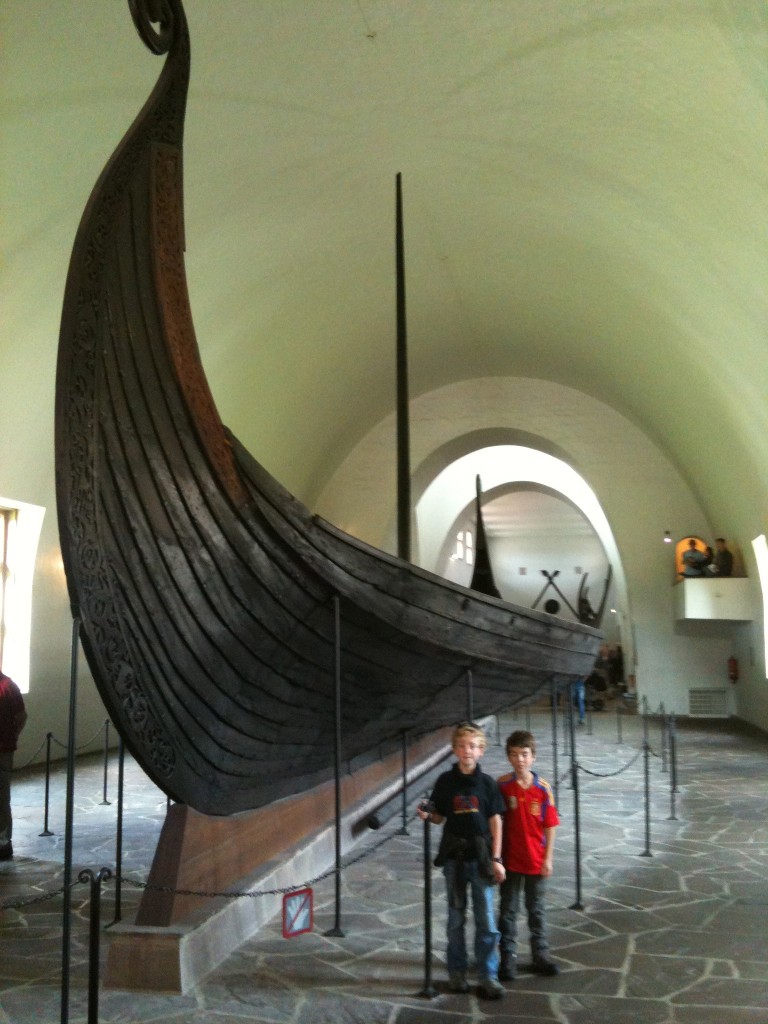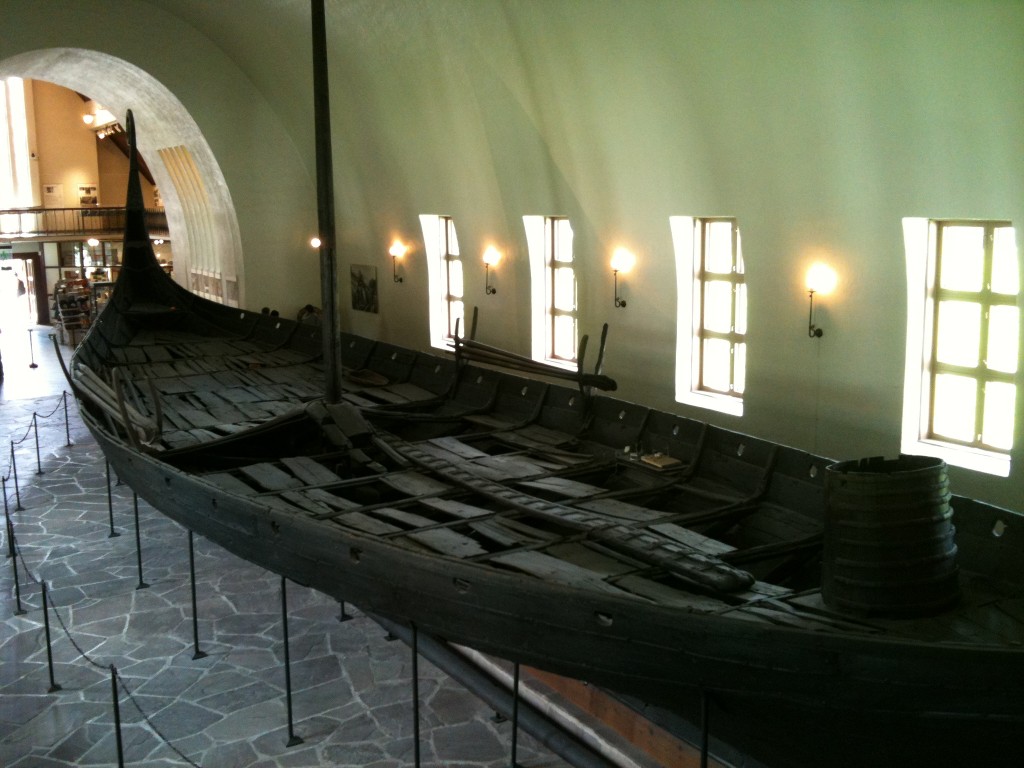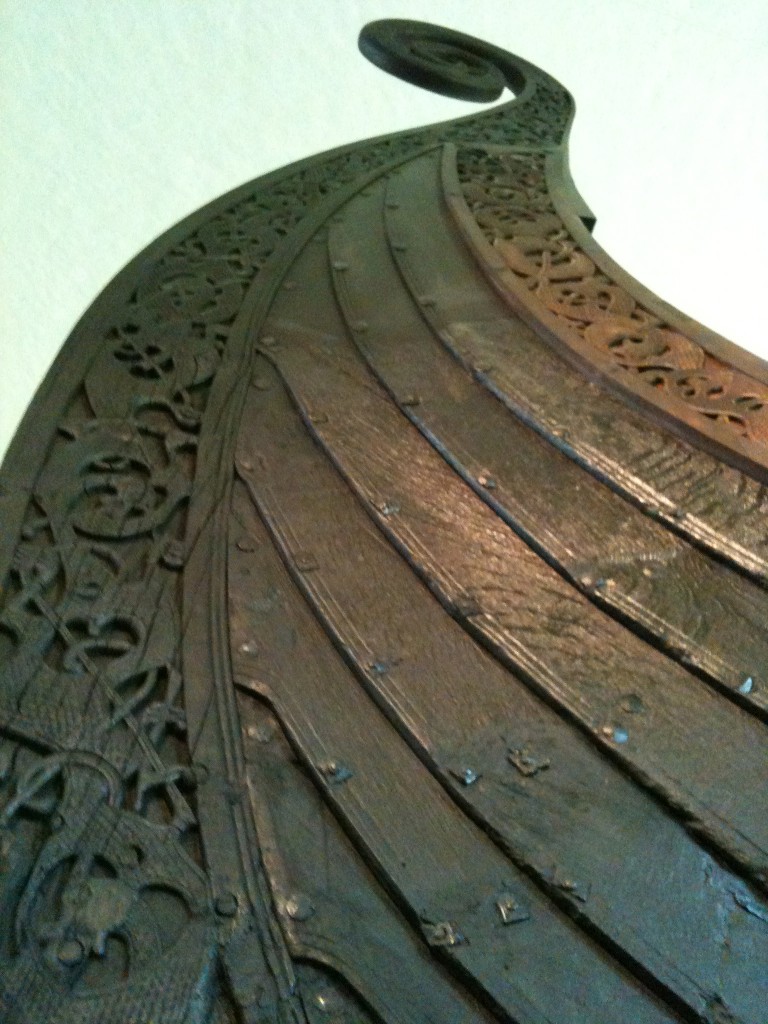Viking ship stories

I guess it comes as no great surprise to find that our traditional ideas of Vikings are a long way from the truth. The movies of the 1960s were not, it turns out, historically accurate. Who’d have thought it?

No horned helmets, no thoughtless barbarians. They did attack settlements but that was a sideline to their traditional trading and may well have been a result of Christian discrimination.
We went to the Oslo Viking Ship Museum this morning and saw, well… Viking ships. The Museum has three ships – two of which are remarkably well-preserved – and a trove of other items. All of it comes from three burial mounds, so barring early grave-robbers, the state of preservation is amazing. The ships are around 1200 years old, but look as if they could have been built yesterday.

The level of craftsmanship in the ships and all the other items was just stunning. As has so often been the case in our travels I was struck by how sophisticated people were prior to the Dark Ages, or in this case even into the Dark Ages. The Viking Ships were incredibly sophisticated in many ways, and ideally suited to their task. They are also beautiful.
The Vikings were farmers and traders until at some point they began to raid other lands. The starting point for the raids is inevitably murky but certainly one of the precursors was the rise of Christianity as Charlemagne expanded the Holy Roman Empire. Trading became a two-tier system with christians getting preferential treatment to pagans such as the Norsemen. The Norse had a long history of raiding in retribution for a wrong; the Norse had no concept of Government policing. They’d all get together and vote on laws; but once a law was agreed, enforcement was in the hands of the individual or family. So it was a small step for them to transfer this to attacking the rich monasteries and settlements in England and mainland Europe.
The only reason that modern historians have a real insight into Viking life was because the Icelanders wrote everything down in the 1200s. Inevitably modern historians still argue over the accuracy of the Icelandic sagas, but they provide greater insight than anything else available. And from a distance a little bit of poetic license probably doesn’t matter much.
There remains something fascinating about Vikings. Even without the dramatic embellishments they were an amazing people who performed some great feats of seamanship. And the horned helmets – which were largely the invention of an opera director – well, they were on sale in the museum shop. Sometimes the story takes over from reality.
I feel this compulsion to wave whenever your path crosses the one we took. I was there at the Oslo museum in May. I hope you did/do the folk museum. If you’re still going, do look for the 1906 Oslo apartment building with different units restored/decorated to represent different Oslo families who lived or might have lived there at different times. It’s an absolutely amazing work of history and social politics. It’s so admirable, how the museum historians/curators have added modern Norway’s life to the traditional farm buildings and history.
Waving is good. All advice appreciated.
Anything else we should be aiming to see or do?